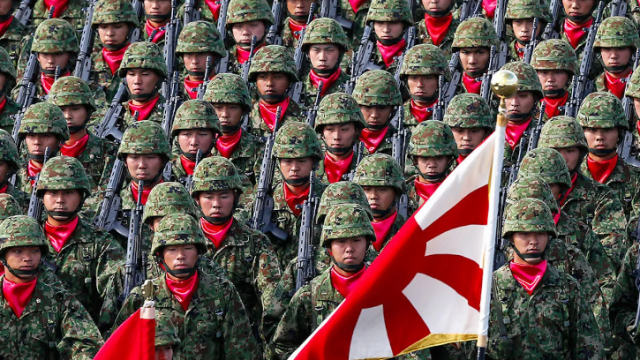TOKYO, Japan (AP/Reuters) — In response to escalating tensions and military expansions by China in the Asia-Pacific region, Japan has embarked on a significant rearmament strategy, marking a profound shift from its post-World War II pacifist stance. This strategic pivot underscores Japan’s growing concerns over regional security and the need to assertively counter China’s military maneuvers.
The Japanese government has unveiled plans to dramatically increase its defense spending, aiming to allocate a record 6.8 trillion yen (approximately $50 billion) for the fiscal year. This ambitious budget, which marks a 20% hike from the previous year, is part of a broader five-year military expansion strategy. Japan intends to further bolster its defense budget to 43 trillion yen ($315 billion) through this period, signifying a historic departure from its traditionally restrained military posture.
Central to Japan’s rearmament efforts is the enhancement of its missile defense capabilities. The country plans to acquire advanced, long-range cruise missiles, including the U.S.-developed Tomahawk missiles, which are capable of striking targets up to 1,600 kilometers (1,000 miles) away. This capability is seen as crucial for preempting potential threats from China and North Korea, especially given the latter’s unpredictable missile tests and nuclear ambitions.
Japan’s strategic realignment includes strengthening its southwestern islands’ defenses, which are in close proximity to Taiwan and significant for the country’s security in the face of Chinese military pressure. By enhancing its military presence and capabilities in this region, Japan aims to deter any aggressive moves by Beijing, particularly around Taiwan, which China claims as its own territory.
The rearmament plan also encompasses a comprehensive upgrade of Japan’s air and maritime forces. The acquisition of 400 U.S.-made Tomahawk cruise missiles, intended for deployment by 2026, exemplifies Japan’s commitment to reinforcing its strike capabilities. Additionally, Japan seeks to develop its own hypersonic gliding missiles to further enhance its defensive and offensive capabilities.
[READ] Japanese manufacturing giant “Toshiba” pulls out of China, cutting 10,000 Chinese jobs
The defence ministry plans to set aside more than 900 billion yen for ammunition and weapons, including new ship-based air-defence missiles, according to the budget request.
Some 600 billion yen will be used to strengthen logistics capabilities to deploy weapons and resources to southwest island chains during an emergency.
The budget includes funding for three new landing ships, for a total of 17 billion yen, more than 300 billion yen for 17 transport helicopters, and a new specialised transport team to improve deployment capabilities, the defence ministry said in its request.
This strategic military buildup has garnered mixed reactions both domestically and internationally. Critics argue that the significant increase in military spending could strain Japan’s finances and potentially escalate regional tensions. However, proponents assert that a stronger military is essential for Japan to navigate the challenges posed by China’s assertive actions in the region and to fulfill its responsibilities as a key ally of the United States in Asia-Pacific security.
Japan’s rearmament initiative reflects a broader trend of nations in the Asia-Pacific region reassessing their security policies amid growing Chinese military adventurism. By fortifying its defense capabilities, Japan aims to ensure its national security, contribute to regional stability, and affirm its position in a rapidly changing geopolitical landscape.
[READ] American support in the Asia-pacific theater


